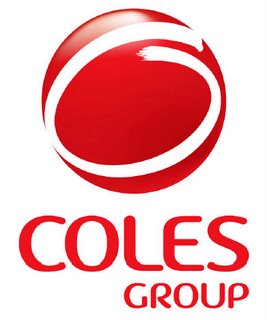
It's only a small thing. But as we all know small things can lead to big things.
But the release of a new Prada fragrance, Tendre (selling for $79.00) in the Sydney Mother's Day catalogue for Kmart Australia, certainly signals to DIFFUSION that Prada seems to be heading down the same road of luxury brand dilution that destroyed the once great Pierre Cardin, nearly brought down the house of Calvin Klein and which threatens so many brands in this market.
Sure you might argue that it's only perfume and for this brand a cheaply priced one at that, but the democratization of luxury brands seems to be destroying those aspects of a luxury brand (exclusivity, price, access, aeesthetic) that denote these brands.
It's fact we noted in our blog The Defining Essence 20 October 2005 and one that seems to have escaped Prada's owners as they take the brand into the mass luxury market.
Perhaps the Prada licensees haven't read the definition of luxury that in 2000 the European Commission used to review Prada's role in the market as part of a ruling on it and LVMH's acquisition of Fendi. What's important about this ruling is that it is one of the few non-academic reviews of the operation of luxury goods.
The Commission described "luxury products" as "high quality articles with a relatively high price, marketed under a prestige trademark". As such luxury goods were considered to operate in a single product market because of two factors "substitutability from the demand side: the idea of acquiring a luxury good is linked to prestige rather than consumption of a precise item" and "substitutability from the supply side" or where most of the producers of luxury goods manufacture a broad range of products such as ready to wear, leather goods, fashion or, in this case, perfume.
This definition fits in comfortably with our understanding of both the pricing and accessibility attributes of luxury brands. More importantly, the definition attaches the generally accepted idea that prestige is also linked to acquisition and not the actual consumption of the item. Which is probably to say that a lot of women will see the Kmart catalogue and think "I have to have this Prada perfume because it is a such a luxe brand".
What's also interesting from this ruling is the Commission also connects both the transactive distance of luxury brands and the aesthetic of their environmental setting to their definition, noting that Prada itself indicated that "the common denominator is the importance of qualitative requirements designed to maintain the image of prestige, exclusivity and the high quality of the brand (e.g. location, the nature of the external appearance of neighbouring shops, decoration and fittings of the outlet which should reflect the prestige of the brand)."
This hardly sits well with my knowledge of my local Kmart located in a suburban shopping mall which hosts a Baker's' Delight, Go-lo and a Wendys and where Prada perfume is likely to sit alongside the latest offering from Paris Hilton in aisle six.
So, by their own definition Prada not only seem to be falling out of the luxury goods market in their attempts to market mass luxury but also are defying some of the basic principles of luxury brand management. These are:
1. creating distance, a no-mix area or barriers to entry for those who are not invited and by necessity of protecting clients from non-clients;
2. selective pricing and and exclusive distribution as well as the aesthetic dimension of the products; and,
3. the recognition and acknowledgement of its luxury status by all.
By all three counts Prada is failing. First, by not maintaining and enforcing these barriers to entry and allowing their licensee to flout it. Second, by using a selective pricing model more recognisable as that of a democratic, basic brand model (other brands of perfume can sell at Kmart at similar prices) and finally, there appears to be both an acknowledgement of its luxury status by very inclusion on the front page of the catalogue, and also an argument for a case of status abandonment by Prada's Australian licensee and, I suspect, its international license holders, for this latest distribution deal. I'm sure it won't be first such breach.


